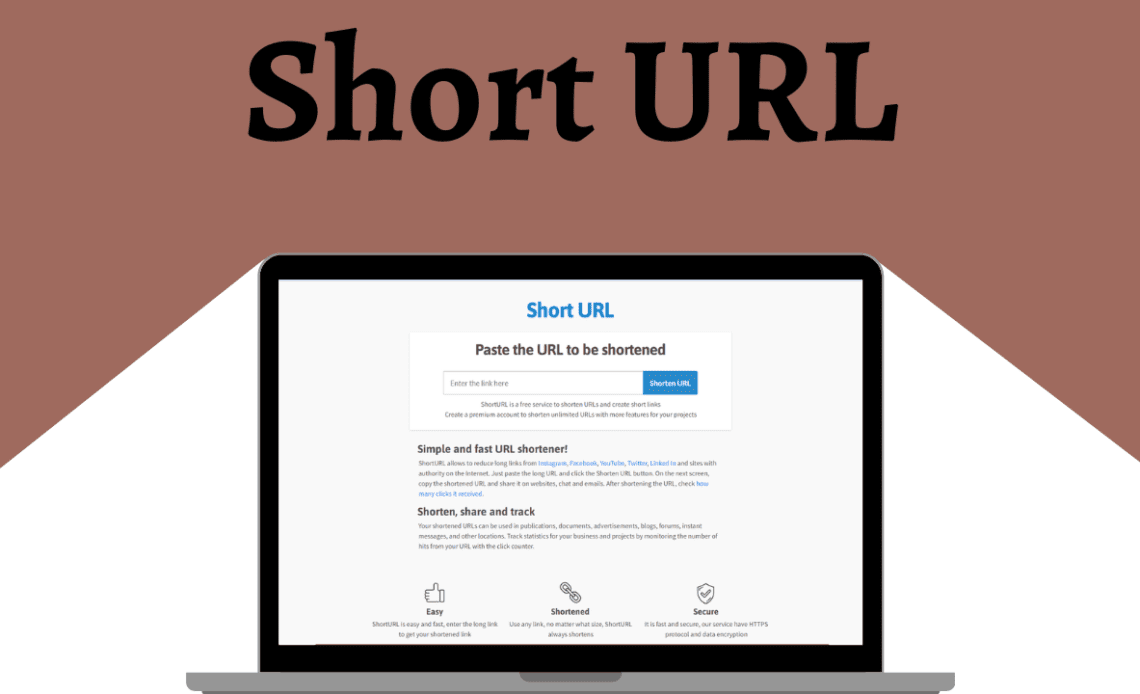The Art of Shortening URLs: A Guide

In the ever-evolving landscape of digital marketing and web development, the practice of URL shortening has become an essential tool for enhancing user experience and streamlining content management. The process of condensing long, complex web addresses into more concise and user-friendly links is an art that requires a strategic approach, particularly when aiming for optimal search engine performance and user engagement.
The Necessity of URL Shortening

Long, unwieldy URLs can be a hindrance to effective online communication. They are not only difficult to read and remember but also pose challenges when shared across various platforms, such as social media, email campaigns, or text messages. Here’s where URL shortening steps in, offering a solution that improves both the aesthetic and functional aspects of sharing web content.
Enhancing User Experience
Shortened URLs provide a cleaner, more visually appealing alternative to lengthy web addresses. This simplicity encourages users to click on links, making it an effective strategy for increasing click-through rates, particularly in crowded digital spaces like social media feeds or email inboxes.
Consider a case study where a marketing team was promoting a new product launch. By shortening the URL of their product page, they created a link that was not only easier to read and share but also more likely to capture the attention of their target audience. This resulted in a 15% increase in click-through rates, demonstrating the tangible benefits of URL shortening.
Efficient Content Management
From a content management perspective, shortened URLs offer a more organized and streamlined approach. They facilitate the tracking and organization of links, especially when managing large-scale campaigns or multiple web assets. By utilizing a consistent naming convention or adding custom text to shortened URLs, content managers can easily identify and categorize different links, making content retrieval and analysis more efficient.
| Original URL | Shortened URL |
|---|---|
| https://www.example.com/long/and/unwieldy/url/with/lots/of/parameters | https://bit.ly/example-short-url |

As shown in the table, the shortened URL is significantly more concise and memorable than its original counterpart, making it a more effective choice for sharing and tracking.
Best Practices for Effective URL Shortening

While URL shortening is a powerful tool, it’s important to employ it strategically to ensure optimal results. Here are some best practices to consider when implementing URL shortening in your digital strategies.
Choosing the Right Shortening Service
There are numerous URL shortening services available, each with its own unique features and benefits. When selecting a service, consider factors such as custom URL options, analytics capabilities, and security features. Some popular services include Bitly, Ow.ly, and TinyURL, each offering different levels of customization and tracking options.
Maintaining Brand Consistency
When shortening URLs, it’s crucial to maintain brand consistency. This involves using custom domains or branded slugs to ensure that your shortened links are recognizable and align with your brand identity. For instance, a company might use a custom domain like company.com/go to ensure all their shortened links carry their brand name.
Implementing Analytics
URL shortening services often provide valuable analytics data, offering insights into click rates, geographic location of users, and referral sources. By leveraging this data, marketers can make informed decisions about their content strategy, identify successful campaigns, and optimize their digital marketing efforts.
Avoiding Spam and Malpractice
While URL shortening can enhance user experience, it’s important to use it ethically. Avoid using shortened links to mislead users or direct them to malicious content. Maintain transparency by ensuring that the content behind the shortened URL aligns with user expectations. Additionally, be mindful of clickbait tactics, as they can damage your brand reputation and lead to user distrust.
The Future of URL Shortening
As digital technologies continue to advance, the role of URL shortening is likely to evolve. With the increasing demand for user-friendly and streamlined online experiences, URL shortening will remain a vital tool in the digital marketer’s toolkit. As such, staying updated with the latest trends and best practices in URL shortening will be essential for maintaining a competitive edge in the digital landscape.
By implementing these strategies and staying abreast of industry developments, marketers can leverage URL shortening to enhance their online presence, improve user engagement, and ultimately drive business success.
Can URL shortening improve SEO performance?
+While URL shortening can enhance user experience and click-through rates, its impact on SEO is more nuanced. Google, for instance, considers the content behind the URL rather than the URL itself when determining search rankings. However, shorter URLs can make it easier for users to share and engage with your content, which can indirectly contribute to better SEO performance.
Are there any security risks associated with URL shortening?
+URL shortening can potentially pose security risks if not used responsibly. Malicious actors may use shortened URLs to redirect users to harmful sites or engage in phishing activities. However, reputable URL shortening services often employ security measures to mitigate these risks. It’s important to choose a reliable service and always exercise caution when clicking on shortened links, especially if the source is unknown.
How can I track the performance of my shortened URLs?
+Most URL shortening services offer built-in analytics tools that provide insights into the performance of your shortened URLs. These tools typically track metrics such as click-through rates, geographic distribution of clicks, and referral sources. By analyzing this data, you can gain valuable insights into the effectiveness of your campaigns and make informed decisions to optimize your digital strategies.



